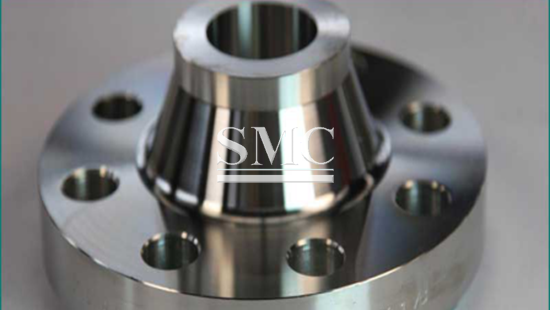
- Company overview The heart of SMC Vision & Philsophy Partnership Certifications Company culture
- Our service Design and Engineering Maintenance and Service Examine Production Line Upgrade and Transformation Storage and Logistics Processing, Trading and Distributor
- Management Our history Global responsibility Info Center
- Procurement center Internship
- Metal Steel Products Stainless Steel Products Aluminum Products Copper Products Galvanized Steel and PPGI Special Alloy Building Material
- Containers ISO Standard Container Equipment Container Storage Container Refrigerated/Reefer Container Offshore Container Container House Tank Container Container Fittings Container Trailer
- Gas Cylinder & Fire Extinguisher Cryogenic Liquid Cylinder Oxygen Gas Cylinder Storage Tank CNG Gas Cylinder LPG Gas Cylinder Hydrogen Gas Cylinder Nitrogen Gas Cylinder Industry Gas Cylinder Fire Extinguisher
- Metal Machinery Forming Machine Cutting Machine Processing Machine Bending Machine Block Machine Other Machinery Motor Spare Parts
- Mechanical Products Miscellany Mooring Equipment Marine Equipment Vehicle Industry Pressure Vessel Conveyor Belt Laser Equipment Bearing
- Electrical System Power Distribution Automation Electrical Cable Solar Power System Electric Protection System Transformer Production Line Lighting System
- Project Plastic Pipes and Pipe Fittings Fiberglass Reinforced Plastic Pontoon System
Monel400 Product Features
Stainless steel contains a certain amount of chrome alloy elements, which can form a strong oxidized film on the surface of the steel that is insoluble in some media, so that the metal is isolated from the external medium without chemical action. Therefore, it is less prone to rust than other steel grades, so the choice of alloying element composition is crucial.
Monel400 alloy, whose chemical composition is mainly composed of 30% Cu and 65% Ni plus a small amount of Fe. The alloy is more resistant to corrosion by reducing media than pure nickel, and is more resistant to corrosion by oxidizing media than pure copper. Since nickel and copper are mutually soluble in any ratio, there is generally no intermetallic phase precipitation. Under certain conditions, the presence of carbides was also observed.
National standards and general terms: MONEL400, ASTM B127, ASME SB-127, AMS 4554, JIS NW4400
Monel400 chemical element composition:
C: ≤0.3
Si: ≤0.50
Mn: ≤2.0
Ni: ≥63
Cu: 28 to 34
S: ≤ 0.024
Fe ≤ 2.5
Monel400 corrosion resistance:
Corrosion resistance is generally superior to nickel-copper. It is more resistant to corrosion by reducing medium than pure nickel, and is more resistant to corrosion by phosphoric acid and carbon than corrosion of pure copper. In particular, it is resistant to corrosion by hydrochloric acid and has excellent corrosion resistance to hot concentrated alkali. It has strong corrosion resistance in fluorine gas, hydrochloric acid and their derivatives. At the same time, it is more resistant to corrosion in seawater than copper-based alloys.
Monel400 is a deformable nickel-copper based nickel-based alloy with good resistance to seawater corrosion and chemical corrosion, and resistance to chloride stress corrosion cracking. This alloy is one of the few alloys that can be used in fluoride. Monel 400 also has very good corrosion resistance in moderately concentrated alkaline and salt solutions.
In most water corrosion conditions, Monel400 not only has strong corrosion resistance, but also pitting corrosion, stress corrosion, etc., and the corrosion rate is less than 0.025mm/a.
The temperature at which Monel400 operates continuously in air is generally around 600 ° C. In high temperature steam, the corrosion rate is less than 0.026 mm / a. Due to its high nickel content, Monel400 alloy can withstand corrosion under anhydrous ammonia and ammoniation conditions below 585 °C.

Monel400 uses:
The main chemical formations in stainless steel such as marine heat exchangers, seawater desalination equipment, salt production equipment, marine and chemical processing equipment, propeller shafts, pumps, water tanks, etc., let us introduce four kinds of things today. Common chemical composition and several heat treatment methods and features:
1 Nickel is one of the main components, which can improve the strength and toughness of steel and improve hardenability. When the content is high, it can significantly change some physical properties of steel and alloy, and improve the corrosion resistance of steel.
2 Chromium is also one of the main components, can improve the hardenability and wear resistance of steel, can improve the corrosion resistance of steel.
3 Copper as one of the auxiliary alloys, its outstanding role is to improve the atmospheric corrosion resistance of ordinary low alloy steel, especially when combined with phosphorus. The Monel system is essentially a nickel-copper alloy.
4 molybdenum as one of the auxiliary alloys can obviously improve the hardenability and heat strength of the steel, prevent temper brittleness, and improve remanence and coercivity. The Hastelloy is essentially a nickel-molybdenum alloy.
Heat treatment methods and features:
1 Solid solution strengthening is an important form of metal strengthening, which increases the strength and hardness of metals by forming solid solutions. When the solute content is appropriate, the strength and hardness of the material can be significantly improved, while the plasticity and toughness are not significantly reduced.
2 aging enhancement is divided into artificial aging and natural aging. Natural aging strengthening is to strengthen the alloy during room temperature placement; artificial aging strengthening is to strengthen the alloy during low temperature heating. Both are based on solid solution strengthening, both to increase the strength of the alloy.
3 Precipitation strengthening is premised on aging strengthening, and the purpose is to strengthen the alloy. Adding elements such as cobalt, tungsten, and molybdenum gives the alloy a high yield strength.
4 grain boundary strengthening occurs because the grain boundary of the alloy is weak at high temperatures, and the addition of trace amounts of boron, zirconium and rare earth elements can improve the grain boundary strength.
5 annealing: the annealed state is the basic state of the furnace. The essence is to convert high speed steel from austenite to pearlite. The function is to reduce the surface hardness of high-speed steel, improve the plasticity, and facilitate the cold deformation processing such as cutting; make the steel composition uniform, improve the performance, prepare for further heat treatment; eliminate stress to prevent deformation or cracking.
For more information, please visit:https://shanghaimetal.com/Metal-18.html
For our full list of products that we offer check out our website here. Be sure to join the conversation in our LinkedIn group, Facebook, Twitter.
Try also our We Chat by scanning the QR code below.
Sunny Y.//SMC Editor

